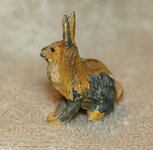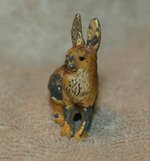imafishingnutt
Bronze Member
- Sep 30, 2007
- 1,675
- 34
- Detector(s) used
- Whites XLT, Tesoro, Whites DFX, Nokta Impact Pro, Ace 400.
- Primary Interest:
- All Treasure Hunting
A friend found this on an old amish site
I told him how good you all were at dating so dont let me down .lol
heres a picture of it.
and yes i know its a rabbit.
its heavy
i think it is lead.
maby 1 and 1/2 inch tall
found at 12 inches down with DFX
I told him how good you all were at dating so dont let me down .lol
heres a picture of it.
and yes i know its a rabbit.
its heavy
i think it is lead.
maby 1 and 1/2 inch tall
found at 12 inches down with DFX









